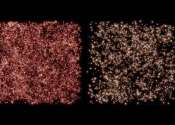Artificial intelligence helps in the identification of astronomical objects
Classifying celestial objects is a long-standing problem. With sources at near unimaginable distances, sometimes it's difficult for researchers to distinguish between objects such as stars, galaxies, quasars or supernovae.









